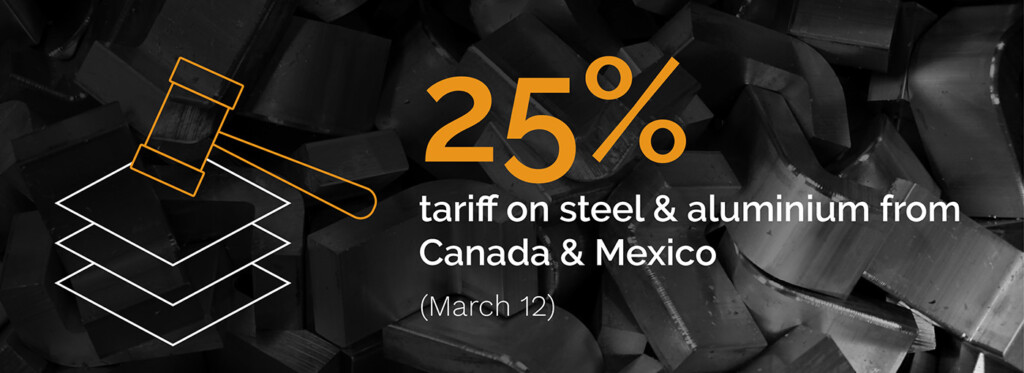Steel and aluminum materials are key in manufacturing. The automotive industry now faces new challenges from significant trade policy changes, with more potential changes or delays to come.
Industry leaders and manufacturers will face challenges with the new 25% import tariffs issued by the United States on steel and aluminum. They will deal with disrupted supply chains and higher costs both in the United States and abroad as trading partners like Canada and the EU implement retaliatory tariffs on metal imports. They must also adapt quickly to these changes.
 Figure 1: Percentage imposed on steel and aluminum tariffs with direct impact to automotive supply chains
Figure 1: Percentage imposed on steel and aluminum tariffs with direct impact to automotive supply chains
Automotive supply chain vulnerability
Navigating this environment requires more than reactive strategies for industry professionals—procurement specialists, supply chain managers, and C-suite executives. To handle these tariffs well, businesses need clear supply chain mapping solutions. These solutions should reduce risks and create new chances to innovate and grow.
No matter if you’re investigating the current or proposed tariffs, the following points are critical for you to know. Here’s our comprehensive guide to understanding, adapting to, and thriving under these new tariffs.
The new tariff landscape explained
The 2025 steel and aluminum tariffs reintroduced by the Trump administration are groundbreaking in scope, with the key changes detailed below:
- Flat 25% tariff: Starting March 12, 2025, President Trump is bringing back the full 25% tariff on steel imports. He is also raising tariffs on aluminum imports to 25%.
- Expansion to downstream products: Unlike earlier tariffs, these duties now include finished and semi-finished goods. This means items like shaped metals, extrusions, or assembled parts, which are important for making cars.
- No exemptions: Canada, Mexico, and the European Union will have to pay the same tariffs as other nations. All 3 were previously granted exemptions to these metal tariffs after they were first imposed by the Trump administration in 2018. Given their cumulative nature, non-USMCA-originating imports of steel, aluminum, and in-scope derivative products now face up to 50% tariffs in light of separate 25% tariffs imposed on Mexican- and Canadian-origin goods. Currently, exemptions for USMCA-originating goods are set to expire on April 2, putting further metal imports at risk of compounded tariffs.. . In the automotive industry, low costs and quick access to steel and aluminum are critical.
